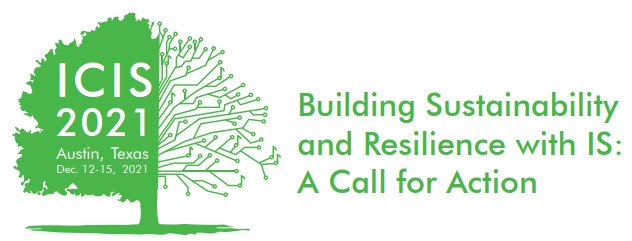IS Implementation & Adoption
Loading...
Paper Number
1290
Paper Type
Completed
Description
Contact-tracing apps represent an algorithm-based technology with significant potential to help address the COVID-19 pandemic by facilitating swift case isolation. However, low adoption rates have prevented these apps from tapping their full potential. A key barrier to adoption has been citizens’ uncertainty surrounding contact-tracing apps. In this regard, algorithmic transparency may be a critical factor in fostering app adoption. In this study, we focus on one central aspect of algorithmic transparency — namely, transformation algorithmic transparency in terms of information disclosure on the app’s inner workings (TAT disclosure). Using an online experiment with 206 participants, we find no significant direct relationship between TAT disclosure and individuals’ installation decision; still, we do find a significant indirect relationship, mediated by actual comprehension of the app’s inner workings and trust into the app. Two moderating factors (benefit appeal and Coronavirus anxiety) did not show any significant effects. Theoretical and practical implications are discussed.
Recommended Citation
Bitzer, Tobias; Wiener, Martin; and Morana, Stefan, "The Role of Algorithmic Transparency in Contact-tracing App Adoption" (2021). ICIS 2021 Proceedings. 4.
https://aisel.aisnet.org/icis2021/is_implement/is_implement/4
The Role of Algorithmic Transparency in Contact-tracing App Adoption
Contact-tracing apps represent an algorithm-based technology with significant potential to help address the COVID-19 pandemic by facilitating swift case isolation. However, low adoption rates have prevented these apps from tapping their full potential. A key barrier to adoption has been citizens’ uncertainty surrounding contact-tracing apps. In this regard, algorithmic transparency may be a critical factor in fostering app adoption. In this study, we focus on one central aspect of algorithmic transparency — namely, transformation algorithmic transparency in terms of information disclosure on the app’s inner workings (TAT disclosure). Using an online experiment with 206 participants, we find no significant direct relationship between TAT disclosure and individuals’ installation decision; still, we do find a significant indirect relationship, mediated by actual comprehension of the app’s inner workings and trust into the app. Two moderating factors (benefit appeal and Coronavirus anxiety) did not show any significant effects. Theoretical and practical implications are discussed.
When commenting on articles, please be friendly, welcoming, respectful and abide by the AIS eLibrary Discussion Thread Code of Conduct posted here.




Comments
13-ImplAndAdopt